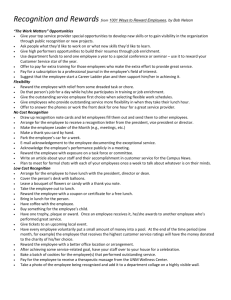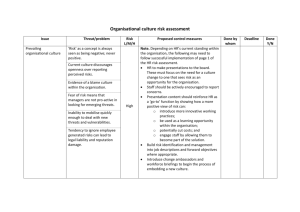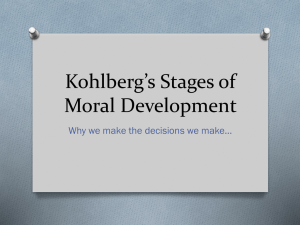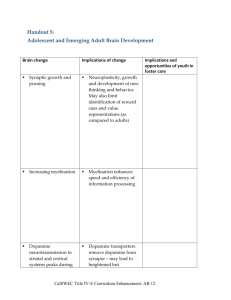My classroom - Noblesville Schools
advertisement
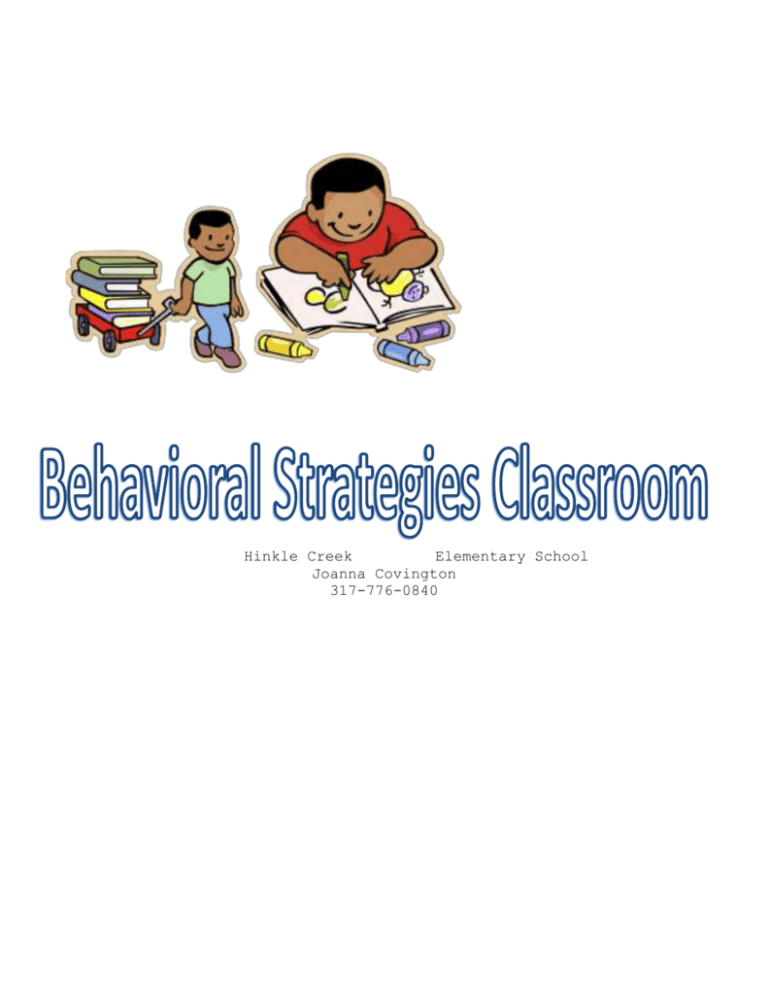
Hinkle Creek Elementary School Joanna Covington 317-776-0840 Mission: To collaborate with families in order to create confident and independent learners with the ability to regulate his/her emotions in order to improve social skills, coping skills, and academic performance. Purpose of Program: Increase academic and social independence Teach social/coping skills 24-hour consistent behavior management Assist during student crisis periods Family education and training Services Needed: Grade level curriculum 24-hour Positive Behavior Intervention Planning Intensive counseling Functional Behavior Assessments (FBA) Behavior therapy Consistent/predictable/structured classroom setting Individualized transition planning for return to ED resource/mainstream Lower teacher to student ratio of support Student calming areas in room (Time out room available) Description of Targeted Student (demonstrates most, if not all descriptors) Students that do not have documented response to interventions in ED Resource program Students that need social skills therapy throughout day Students that are demonstrating behavioral concerns in a variety of settings (specials, classroom, bus, home, etc.) Students returning from MOSAICS to NS. Grades 1st – 3rd (case conference decision) Communication Notebook Every night a communication notebook will go home. This will give each child’s daily behavior percentage and any behaviors that were documented during the day will be shared with parents. Parents are encouraged to share information from the evening before as part of the student’s behavior plan. Parents will know what level their child will be on the following day and what the privileges and consequences are for each level. Our Classroom Rules “Do the right thing, treat people right” Follow Directions 1. Active Listening 2. Ask questions Raise Your Hand Stay On Task 1. Ignore distractions 2. Quiet hands and feet 3. Doing work or listening to lesson Show Respect for Property and Others 1. Use materials properly 2. Hands and feet to self 3. Respectful words 4. Walk in hallways and classroom Follow your lifeskills and… Do Your Personal Best. Leveling System The Behavior Strategy Classroom will work on a level system. There will be 3 levels and each student earns a level daily. The level system will be based on a percentage of a child’s behavior from the previous day. If a student has earned level 1 by reward time, he/she will not get reward time. Level #3 - A student will be on this level when he/she has a behavior percentage of 90% -100% Privileges: Can sit anywhere for lunch Recess Reward time Treasure box Specials Level #2- A student will be on this level when he/she has a behavior % of 70%-89%. Privileges: Everything level 3 gets except for assigned seating for lunch. Level #1- A student will be on this level when he/she has a behavior of below 70%. This level usually occurs when a student is verbally or physically aggressive or has excessive wasted time. Consequences: Lunch is time out area Recess at own desk No Specials No treasure box No reward time Behavior Sheets The behavior sheets will be used in 30 minutes increments. If a student is on task then the behavior sheet will be left blank. A reminder will be given when a student is not on task and this is documented on the behavior sheet. When 3 reminders are given a student may be given a time out. Each reminder is 1% off daily behavior. If a student’s behavior is extreme then a certain % will be deducted for the behavior. All behaviors will be documented! At the end of each week the weekly behavior % will be calculated and all behaviors will be tracked. (This is only for teacher records) This sheet will have to be created around the time of day students will be in the program. I have samples of some. Reward Time At the end of the day reward time will be given. If a student is on level 2 or 3 then reward time is earned. Students will be able to play games, read and listen to music. They can choose what they want to do. If a student is on level 1 then that child will be expected to stay at his/her desk and finish work. Reward time will be daily and last about 20 minutes. *** If a student is on level 1 and has used a positive coping strategy then he/she can earn bonus points to get reward time. Time Out and Chill Out Areas The time out area is used when a child is in need of a safe environment. If the student is a danger to himself/herself or others he/she will be put in the time out area. The time out area will be held shut only when necessary. The chill out area is to be used when a child asks for a time out on his/her own and he/she is not being physically aggressive. The student can cool down and chill out or do work in this area. Expectations During Discipline: Follow directions Accept consequences No verbal or physical aggression Consequences Physical Aggression: includes violent/aggressive physical acts, physical intimidation, destruction of documentation of property and vandalism Level drop to level 1 and minus 35% Verbal Aggression: includes verbal intimidation, swearing, name calling, threats, bullying and intolerant behavior Level drop to level 1 and minus 35% Wasted Time: students are responsible for making positive choices to complete assignment during the school day. When students choose not to use time wisely they are expected to make up wasted time. One percent is deducted after five consecutive minutes of wasted time. If wasted time continues, lunch and or recess detention may be assigned to make up work Automatic Percentage Reductions: Inappropriate items brought to school: * staff takes item and notifies parent. Minus 10% Leaving Assigned Area: * minus 35% Fleeing: *minus 50%
